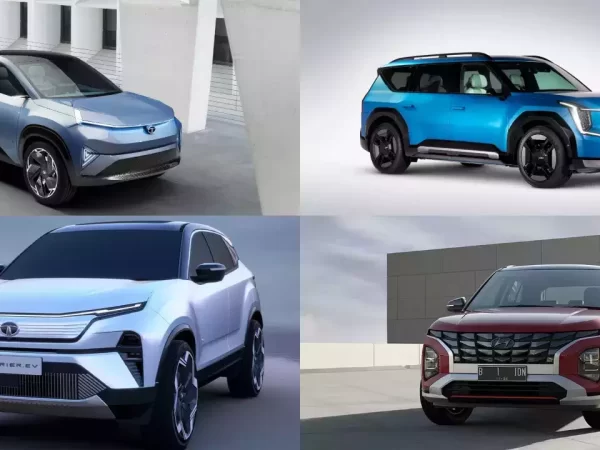Unveiling the Latest Car Trends for 2024
A bright future waits around the corner in 2024, when a whole slew of new technologies, consumer tastes, and other forces will come together to reform and rejuvenate the automotive world.
The image above, which this car is based on, belongs to @thejdgeorgeI’m happy to announce Lucid Motors is joining the league of leading EV manufacturers. Lucid’s 10Best-winning Air sedan will soon hit market with an SUV concept inspired by this image. The car will be sleek and powerful with an elegant cabin that boasts 1,000 horsepower.
Oversized Wheels
Vehicles with massive wheels have been in great demand in the second-hand car markets. Owners will often type-and-upgrade their wheels with bigger tyres and rings, with a view to achieving better grip and stability on snow and rain or off-road conditions.
Upgrade your vehicle tyres to larger ones for high contact patch area for traction and stability along with increased ground clearance.
On the downside, however, if you are not too careful, you could be putting your engine into overdrive by attempting to turn those gargantuan wheels – and in doing so, potentially drive up both your fuel bills and your speedometer readings. Even more troubling is the fact that those tyres could also introduce premature wear into your steering system. Yes, before you order, make sure you’ve fully considered your options – because what you’re about to pay for ain’t cheap!
EVs
But even in the lightning-fast world of next-day shipping and broadband-enhanced internet access, some auto-industry innovations can’t be rushed and likely won’t appear on dealer lots for 12 to 24 months, or in some cases several years – starting with the images in this gallery.
Increased numbers of people are looking into electric vehicles – battery-based cars that offer fuel savings of 500 per cent at a premium of just a few thousand dollars or so, and tend to drive like traditional cars. Impressively, hybrid technology is spreading throughout the fleet, now available in family sedans and minivans, and almost all models of truck or SUV.
Some manufacturers are moving closer to the challenge and have made or are about to make vehicle models that utilise the fuel. Toyota’s Mirai and Hyundai’s Nexo, from each of those manufacturers respectively, are FCEVs. Jaguar Land Rover is also working on FCEVs.
Shared Mobility Services
People will increasingly seek to minimise their carbon footprint, and feel the daily pain of endless hours spent in gridlock. To meet these needs, shared mobility services will become popular options via micromobility solutions, ie, bike sharing and ride-on-demandthat allow urban and suburban dwellers, as well as commuters stuck in traffic, to hop from one point to another.
Road congestion and emissions in cities should decrease now that car-sharing services are widespread: one UITP study noted that, in theory, 16 privately owned cars could be replaced for every car-sharing vehicle.
All these features – both input and output – consume digital data, rely on remote diagnostics, give consumers access to 4G LTE Wi-Fi hotspots, assisted phone calls or send assisted messages, and have more recently been offered on some models. All these features directly or indirectly promote convenience and functionality.
Advanced Safety Systems
Car makers always explore new ways on how to make their cars safer, and some advanced safety systems are becoming common features in many modern cars, such as lane-keep assist or blind-spot detection, and even beyond that, more advanced ADAS systems will even brake or steer your car to avoid a collision!
ADAS features have increasingly found favour with some of the larger rideshare and taxi company fleets, or professional drivers – such as those of Uber or Lyft – who frequently use parking garages.
ADAS design can drastically reduce the risk of crashes, but will never completely eliminate the risk for the foreseeable future. Given that widespread autonomous driving is probably still years away, if not decades away, effective use of current prototypes requires that drivers pay close attention to the road and remain vigilant at all times.
Lightweight and High-Strength Materials
Lightweight materials, such as aluminium, magnesium, carbon fibre composites and titanium, can substantially reduce automotive mass while maintaining safe levels of occupant protection. Lightweight materials will also enable the inclusion of new features such as advanced emissions control and safety systems without mass penalties, to increase all-electric range in hybrid electric, plug-in hybrid electric and battery electric vehicles.
Graphene, one of the toughest two-dimensional materials on the planet, could in theory replace structural components in cars that are currently heavy and made of metal; but new manufacturing processes would probably be needed, and the material is far too expensive for most applications.
A recently developed aluminium-tempered steel alloy is another option, half the weight of titanium and still strong enough to support a human life.









